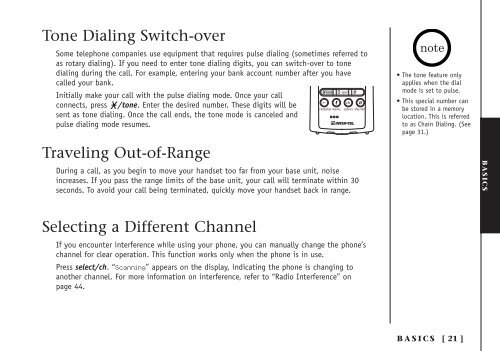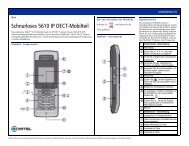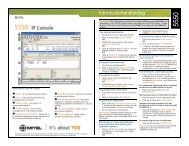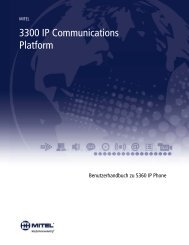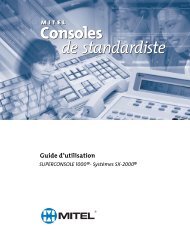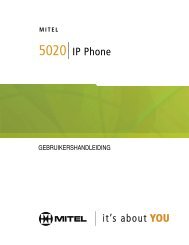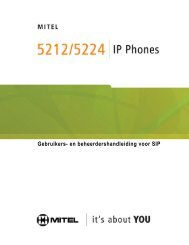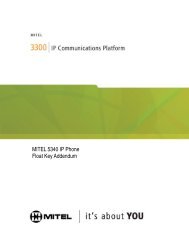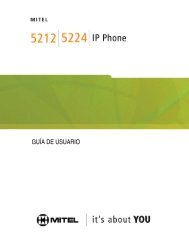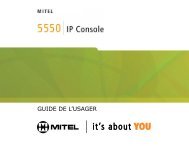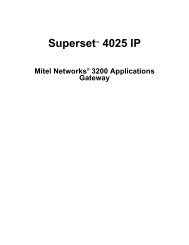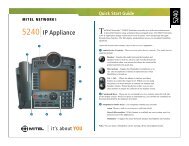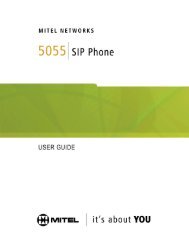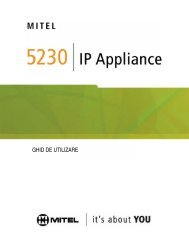INT1100 User Guide - Mitel Edocs
INT1100 User Guide - Mitel Edocs
INT1100 User Guide - Mitel Edocs
You also want an ePaper? Increase the reach of your titles
YUMPU automatically turns print PDFs into web optimized ePapers that Google loves.
Tone Dialing Switch-over<br />
Some telephone companies use equipment that requires pulse dialing (sometimes referred to<br />
as rotary dialing). If you need to enter tone dialing digits, you can switch-over to tone<br />
dialing during the call. For example, entering your bank account number after you have<br />
called your bank.<br />
Initially make your call with the pulse dialing mode. Once your call<br />
connects, press /tone. Enter the desired number. These digits will be<br />
sent as tone dialing. Once the call ends, the tone mode is canceled and<br />
pulse dialing mode resumes.<br />
Traveling Out-of-Range<br />
During a call, as you begin to move your handset too far from your base unit, noise<br />
increases. If you pass the range limits of the base unit, your call will terminate within 30<br />
seconds. To avoid your call being terminated, quickly move your handset back in range.<br />
• The tone feature only<br />
applies when the dial<br />
mode is set to pulse.<br />
• This special number can<br />
be stored in a memory<br />
location. This is referred<br />
to as Chain Dialing. (See<br />
page 31.)<br />
BASICS<br />
Selecting a Different Channel<br />
If you encounter interference while using your phone, you can manually change the phone’s<br />
channel for clear operation. This function works only when the phone is in use.<br />
Press select/ch. “Scanning” appears on the display, indicating the phone is changing to<br />
another channel. For more information on interference, refer to “Radio Interference” on<br />
page 44.<br />
BASICS<br />
[ 21 ]


